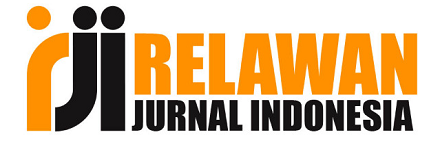PENGARUH KUALITAS PELAYANAN DAN SASARAN KESELAMATAN PASIEN TERHADAP KEPUASAN PASIEN RUMAH SAKIT PRIMA HUSADA MALANG
DOI:
https://doi.org/10.33474/manajemen.v2i2.994Abstract
Quality of health services can be defined as the degree of perfection of hospital services to meet the needs of the community for health services in accordance with professional standards and service standards by appropriately using appropriate, efficient, and effective hospital resources provided and safe and satisfactory in accordance with the norm , Ethics, law, and socio-culture with due regard to the limitations and capabilities of hospitals and communities.
The purpose of this study is to determine the Effect of Service Quality and Target Patient Safety of Patient Satisfaction at Prima Husada Hospital Malang. Design This research is explanatory research with multiple linear regression approach with total sample of 100 respondents (patient and companion of inpatient) Prima Husada Hospital. The study was conducted from May to July 2017.
The results showed that the regression coefficient of service quality variables (B1) is known at 0.110 which indicates the magnitude of the effect of service quality variable on patient satisfaction. The result of the regression coefficient means that service quality has an effect of 0.110 on patient satisfaction, where the effect is positive (unidirectional). The regression coefficient of patient safety target variable (B2) is known as 0,551 indicating the influence of patient safety target variable on patient satisfaction. The result of the regression coefficient means that the patient's safety goal has an effect of 0.551 on patient satisfaction, where the effect is positive (unidirectional). Service quality variable partially significant to patient satisfaction and patient safety target variable partially significant to patient satisfaction. The hypothesis that the quality of service (X1) and patient safety goals (X2) simultaneously have a significant effect on patient satisfaction in this research is acceptable. The standardized beta coefficient value of the target patient's safety variable is greater than the standardized beta coefficient beta value of service quality variables. These results mean that the patient's safety goal is a variable that has a dominant effect on patient satisfaction. Value of correlation coefficient (r) equal to 0,904. This shows a positive and strong relationship between service quality variables and patient safety goals with patient satisfaction.
Â
Keywords: service quality, patient safety target, and patient satisfaction of Prima Husada Hospital
References
Aditama, Tjandra Yoga. (2015). Manajemen Administrasi Rumah Sakit. Jakarta : UI Press.
Alimul, Aziz. (2010). Metode Penelitian & Teknik Analisis Data. Jakarta : Salemba Medika.
Endarwita. (2013). Manajemen Pemasaran. Bandung : Rosdakarya.
Ghozali, Imam. (2006). Aplikasi Analisis Multivariate Dengan Program SPSS. Semarang : Badan penerbit Undip.
Gujarati, Damodar (2007). Dasar-dasar Ekonometrika. Jakarta : Erlangga.
Hermawan. (2009). Mandiri Belajar SPSS. Yogyakarta : EGC
Irbantoro, Dolly. (2015). Pengaruh Kualitas Pelayanan Terhadap Kepuasan Pasien Rawat Inap di Rumah Sakit Kota Batu.Maret 2013.Vol.13.No.1. Jakarta : Jurnal Manajemen
Jasfar, Farida. (2009). Manajemen Jasa Pendekatan Terpadu. Bogor : Ghalia Indonesia.
Laili, Noor. (2016). Hubungan Mutu Pelayanan Perawat Dengan Tingkat Kepuasan Pasien Di Ruang Rawat Inap Kelas III RS PKU Muhammadiyah Bantul Yogyakarta. Agustus 2016.Vol.3.No.2. Jakarta : eJurnal Keperawatan.
Mastuti, Aksa. (2011). Manajemen Pemasaran Jasa. Bogor : Ghalia Indonesia.
Mulyana, Heri. (2014). Hubungan Persepsi Pasien tentang Implementasi Budaya Keselamatan Pasien dengan Kepuasan Pasien di Ruang Rawat Inap Rumah Sakit Puri Mandiri Kedoya. Januari 2014. Vol.3.No.2. Jakarta : Jurnal Manajemen
Nursalam. (2013). Metodologi Penelitian Ilmu Keperawatan. Jakarta : Salemba Medika.
Prasetyo, Anton. (2013). Hubungan Patient Safety Dengan Kepuasan Pelanggan di Ruang Rawat Inap Rumah Sakit Jiwa Grhasia PEMDA DIY. Maret 2013.Vol.3.No.2. Jakarta : eJurnal Keperawatan.
Ratnasari, Ririn Tri.dkk. (2011). Teori Dan Kasus Manajemen Pemasaran Jasa. Bogor : Ghalia Indonesia.
Sanusi. (2013). Modul SPSS Dasar. Malang : UB Press
Sari, Thisna. (2015). Hubungan Pelaksanaan Identifikasi Pasien Secara Benar Dengan Kepuasan Pasien Di Instalasi Gawat Dadurat (Igd) Rsup Prof. Dr. R. D. Kandou Manado. Mei 2015.Vol.3.No.2. Jakarta : eJurnal Keperawatan.
Sharon,dkk. (2017). Manajemen Pelayanan Kesehatan. Jakarta : EGC.
Shinta, Agustina (2011). Manajemen Pemasaran. Malang : Universitas Brawjaya Pres (UB Press).
Sudaryono. (2016). Manajemen Pemasaran Teori & Implementasi. Yogyakarta : Andi.
Suharsimi, Arikunto. (2010). Prosedur Penelitian Suatu Pendekatan Praktik. Jakarta : Rineka Cipta.
Suharsimi, Arikunto. (2013). Prosedur Penelitian Suatu Pendekatan Praktik. Edisi Revisi Jakarta : Rineka Cipta.
Sugiyono. (2010). Dasar-dasar Statistik. Bandung : Alfabeta.
Sunyoto, Danang. (2012). Dasar-dasar Manajemen Pemasaran Konsep, Strategi, dan Kasus. Jakarta : Center of Academic Publishing Service (CAPS).
Sunyoto, Danang. (2015). Manajemen Pemasaran Jasa Merencanakan, Mengelola, dan Membidik Pasar Jasa. Jakarta : Center of Academic Publishing Service (CAPS).
Supranto. (2011). Pengukuran Tingkat kepuasan Pelanggan. Jakarta : Rineka Cipta.
Susanti, Fathonah Eka. (2015). Manajemen Pemasaran Jasa. Jakarta : Center of Academic Publishing Service (CAPS).
Tjiptono,dkk. (2011). Manajemen pemasaran. Yogyakarta : Andi.
Wardai, Beny. (2013). Pengaruh Kualitas Pelayanan terhadap Kepuasan Pelanggan dari Sudut Pandang Pasien dan Pendamping Pasien (Studi Kasus di RS Madistra Jakarta). Vol 1.No.1. Jakarta : Jurnal Manajemen.
Zeithaml, dkk. (1999). Dasar-dasar Manajemen Pemasaran. Bandung : Wacana Prima.












